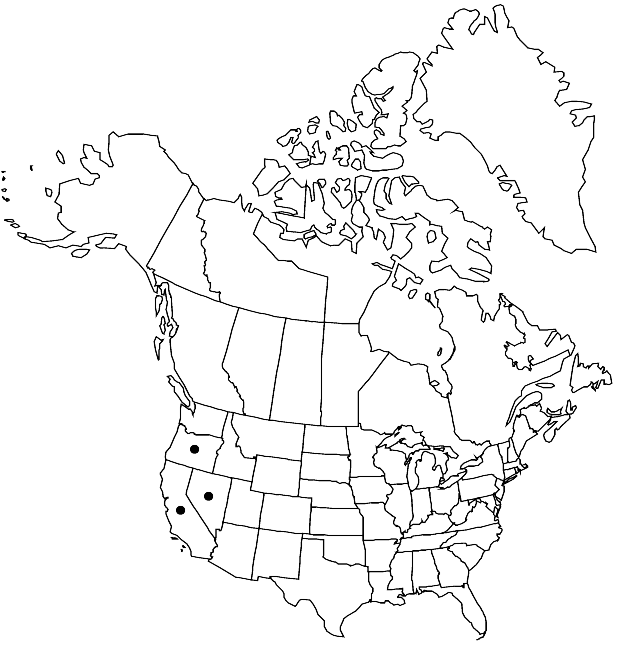Difference between revisions of "Salix jepsonii"
J. Arnold Arbor. 1: 89. 1919.
FNA>Volume Importer |
FNA>Volume Importer |
Revision as of 22:52, 16 December 2019
Shrubs, 1–3 m, (sometimes forming clones by stem fragmentation). Stems: branches (highly brittle at base), yellow-brown or red-brown, weakly glaucous or not, (dull or slightly glossy), velvety or short-silky to glabrescent; branchlets gray-brown or red-brown, sparsely or moderately densely short-silky or velvety, (buds caprea-type or intermediate). Leaves: stipules usually rudimentary, sometimes foliaceous on early ones, foliaceous on late ones, apex acute; petiole shallowly grooved, or convex to flat adaxially, 3–12 mm, short-silky or velvety adaxially; largest medial blade lorate, narrowly oblanceolate, or oblanceolate, 43–74–103 × 8–25 mm, 2.9–4.8–7.7 times as long as wide, base convex or cuneate, margins slightly revolute to flat, entire, apex acuminate, convex, or acute, abaxial surface glaucous (sometimes obscured by hairs), densely short-silky, hairs straight, adaxial dull (sometimes thinly glaucous) to slightly glossy, sparsely short- or long-silky; proximal blade margins entire; juvenile blade yellowish green or reddish, densely long-silky abaxially, hairs white. Catkins flowering as leaves emerge; staminate stout or subglobose, 16–16.5 × 11–13 mm, flowering branchlet 2.5–3 mm; pistillate moderately densely flowered, slender to stout, 33–55 × 10–11 mm, flowering branchlet 1.5–7 mm; floral bract brown or tawny, 0.8–2 mm, apex rounded or acute, abaxially hairy, hairs straight. Staminate flowers: adaxial nectary narrowly oblong to oblong, 0.4–0.8 mm; stamens 1 or 2; filaments distinct or connate less than 1/2 their lengths, hairy on proximal 1/2; anthers purple turning yellow, ellipsoid or shortly cylindrical, 0.6–0.8 mm. Pistillate flowers: adaxial nectary oblong to narrowly oblong or flask-shaped, 0.3–0.6 mm, shorter than or equal to stipe; stipe 0.4–1.2 mm; ovary pyriform, densely long-silky, beak gradually tapering to styles; ovules 13–18 per ovary; styles 0.4–0.6 mm; stigmas flat, abaxially non-papillate with rounded to pointed tip, 0.2–0.3 mm. Capsules 3–5 mm.
Phenology: Flowering mid-late Jun.
Habitat: Margins of lakes and streams, wet meadows, gravel, rocky, or bouldery substrates, granite
Elevation: 1000-3400 m
Distribution

Calif., Nev., Oreg.
Discussion
R. D. Dorn (2000) justified treating Salix jepsonii as S. sitchensis var. angustifolia based on specimens of S. jepsonii from southern Oregon. Salix jepsonii does occur in southern Oregon but is distinct enough from S. sitchensis to be treated as a species.
Selected References
None.